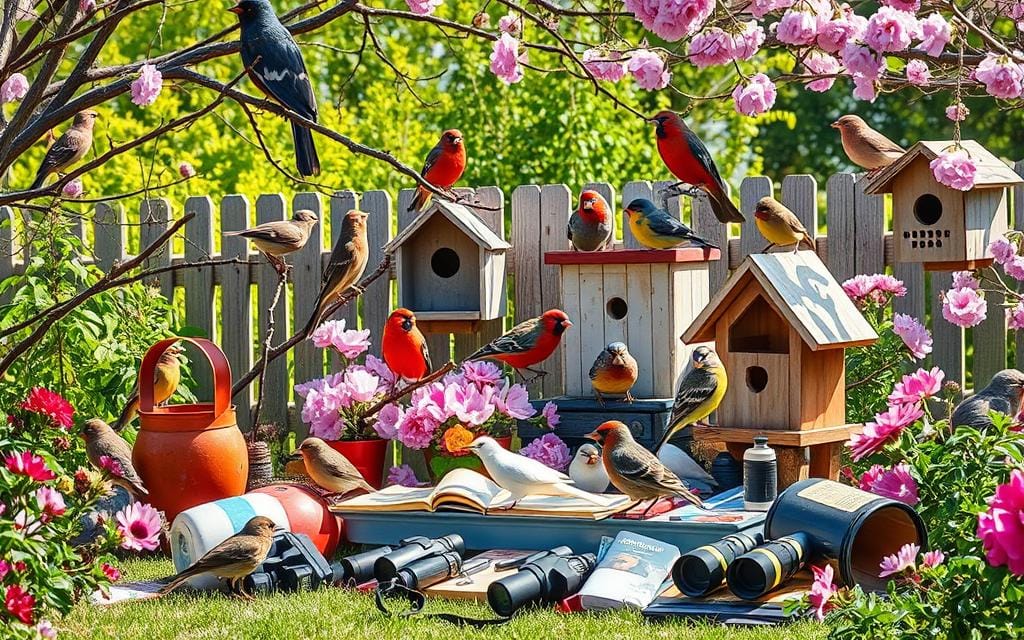As an environmental enthusiast, I’m deeply worried about deforestation’s harm to our planet. Forests cover about 31% of Earth, but humans have changed or damaged over 75% of the land1. This constant cutting down of forests changes the weather, destroys homes, and worsens the climate crisis1.
Deforestation is a big cause of climate change, turning places that absorb carbon into ones that emit it, raising global temperatures1. It’s making the rainforest loss worse than the European Union and almost as bad as the US1. Also, it cuts the Amazon’s rain by about 10%, or 138 millimeters, each year, messing with the water cycle1.
Table of Contents
ToggleWhat is Deforestation?
Definition and Key Drivers of Forest Loss
Deforestation means cutting down forests for other uses like farming, raising cattle, making palm oil, and logging2. About 31 percent of the Earth’s land is covered in forests2. Tropical forests, just 7 percent of the land, are home to half of all species2. Sadly, humans cut down 15.3 billion trees each year2. Over 12,000 years, we’ve lost nearly half of the world’s trees2.
Agriculture is the main reason for deforestation, making up 80% of it3. Crops like soybeans, palm oil, beef, and rice cause a lot of forest loss3. Livestock farming, especially soya production, is behind 70 to 80% of deforestation in the Amazon3. Timber logging, building projects, and urban growth also drive deforestation3.
Deforestation harms the environment, changing the climate and ecosystems, and threatens millions of humans and animals2. It can make the tropics drier and hotter and change rainfall patterns far away2. Deforestation also adds 10-15% to human-made CO2 emissions, playing a big role in climate change32.
Climate Change Intensification
Scientists agree: deforestation is a big cause of climate change4. Forests are key in absorbing carbon, especially the Amazon rainforest5. But, deforestation is making these forests emit more greenhouse gases, raising global temperatures.
About 10 percent of emissions come from deforestation4. Most of this is from agriculture, which clears out 80 percent of tropical forests4. In 2011, farms emitted about 13 percent of global emissions4. This is because farming and raising livestock release a lot of greenhouse gases, adding to global emissions.
The Amazon rainforest is especially affected by deforestation5. Deforestation causes about 23% of global greenhouse gas emissions, more than transport emissions5. If temperatures rise by 2.5°C by 2050, climate change could cost Latin America and the Caribbean 1.5% to 5% of their current GDP. Ecuador could see a drop in GDP of 19.4%5.
Deforestation also raises the risk of wildfires, which destroy more forests and worsen the problem6. Under a high emission scenario, deforestation could have the same effect as climate change by 21006. The risk of heat stress is highest in Northern Brazil and among vulnerable groups6. By 2100, over 11 million people will face heat stress due to the Amazon’s savannization6.
The science is clear: we need to act fast to stop deforestation and its harm to the climate5. If we don’t control deforestation, we’ll see big changes in temperature and rainfall5. Studies show deforestation can change climate patterns, leading to warmer climates with more droughts and fires5.
Disruption of the Water Cycle
Forests are key to the water cycle, acting as natural reservoirs that control precipitation and stop desertification7. But, the fast pace of deforestation is upsetting this balance, causing big problems for the environment.
Deforestation greatly affects the water cycle, leading to less rain and changes in when it falls8. When trees are cut down, less water goes into the air through transpiration. This process helps make clouds and rain7. So, places with a lot of forest loss see up to 15% less rain7.
The Amazon rainforest shows how this works9. In the last 50 years, about 17% of the Amazon has been lost to deforestation8. Experts say at least 80% of the trees are needed to keep the hydrological cycle going8. With this loss, the Amazon sees about 10% less rain, or 138 millimeters a year8.
Deforestation’s effects go beyond the Amazon. In the South Asian Monsoon region, the drop in rainfall is even bigger, with India seeing 18% less rain in one year8. This messes with the monsoon seasons, which are crucial for farming and water in many communities.
Deforestation also changes the water cycle by making it harder for water to soak into the ground and causing more runoff. This leads to soil erosion, flooding, and dirty water8. Without trees, these problems get worse, threatening both people and nature.
Groups like The Canopy Project are trying to fix this by replanting trees and restoring the balance in the hydrological cycle8. By tackling deforestation and promoting sustainable forest care, we can keep this important resource safe for the future.
Soil Degradation and Erosion
Loss of Fertile Topsoil and Land Productivity
Deforestation harms our soil’s health. When trees are cut down, the land is exposed and at risk. Without trees, the topsoil is washed away by wind and rain, causing soil erosion10. Costa Rica loses 860 million tons of topsoil each year, and Madagascar loses 400 tons per hectare10. This loss makes the land less fertile, as the nutrient-rich top layers are gone.
Deforestation leads to serious soil problems11. In Ivory Coast, slopes lose 90 tons of soil per hectare a year after trees are cut down10. The island of Java in Indonesia lost 770 million metric tons of topsoil in the late 1980s, which meant 1.5 million tons of rice were lost, enough for 11.5-15 million people10. This loss hurts food security by making it harder to grow nutritious crops.
Deforestation also harms the ecosystem balance11. It leads to a loss of biodiversity and disrupts cycles like carbon, nitrogen, and water. This makes the soil less fertile and hurts farming11. To fix this, we need to focus on reforestation to protect our soils11.
The effects of deforestation and erosion are huge10. They cost billions of dollars a year and harm infrastructure, fisheries, property, and farms10. Erosion also damages coral reefs, hurting biodiversity and coastal economies10. Deforestation makes roads and highways in forests costly to maintain10. We must tackle soil degradation and erosion to ensure a sustainable future.
Threats to Indigenous Communities
Deforestation is a big threat to indigenous communities, especially in the Amazon rainforest. This area is home to over a million indigenous people, mostly of Indian descent, living in more than 400 tribes12. These “uncontacted” tribes are losing their homes and resources fast as the forest disappears13.
The Amazon is losing 22 square kilometers of forest every day13. This forces indigenous communities to move and find new ways to live. Deforestation outside their lands is much higher, showing how important they are for the Amazon’s health13.
Indigenous lands have less deforestation than national parks12. But, logging, mining, and farming are still threatening their way of life and culture12. In Indonesia, there were 450 land conflicts in 2016, affecting 1,265,027 hectares and 86,745 households12.
Deforestation affects indigenous communities in many ways, like making them move and losing food security14. They can’t use the forest for food, medicine, or cultural activities anymore12. But, many indigenous groups are fighting back, using activism and new jobs like ecotourism and sustainable farming14.

Protecting indigenous communities and their lands is key to saving the Amazon and fighting climate change12. They’re working with groups and governments to defend their rights and plant more trees14.
Biodiversity Loss and Habitat Destruction
Deforestation is a big threat to the world’s biodiversity. It harms the ecosystems that support a wide variety of life. Forests are home to over 80% of all animals, plants, and insects on land15. But, these habitats are being destroyed at an alarming rate, causing a huge loss of biodiversity16.
Impacts on Animal and Plant Species
Deforestation hurts animals and plants by taking away their homes. It leads to soil erosion, less nutrients, and changes in temperature15. This can be deadly for many species. It also affects the food supply for animals, making them weak and hungry.
The problem goes beyond forests. Changes in land use and pollution are big threats to wildlife16. Over the last 40 years, many animal populations have dropped by two-thirds16.
Some countries are trying to protect their natural areas, but it’s a big task15. By January 2019, only a small part of the oceans and land was protected15.
We need to act fast to save our biodiversity. Nature-positive policies can help fight climate change and protect nature16. The goal is to protect 30% of the land and seas by 2030 to save biodiversity16.
deforestation effects on the environment
Deforestation greatly affects global food security and how much food we can grow. When forests are cut down, the balance of nature is upset. This leads to poor soil, changes in the weather, and a loss of plant and animal life that are key for farming17.
People living near tropical forests are especially at risk from deforestation. They depend a lot on farming. Research shows that cutting down the Amazon has made farming there 39% less productive and soy production 25% less in many areas17.
When forests are gone, the local climate and water cycles change. This makes the soil worse for farming. Farmers find it harder to grow food, which can make food hard to get in poor countries that mainly farm for food17.
Deforestation’s impact on food security is big and can affect the world’s economy and people’s health. We need to find ways to grow food without harming our forests. This is key as the world’s population grows17.
Increased Risk of Zoonotic Diseases
Deforestation is destroying our planet, making it harder to tell where humans and animals live. This has led to more zoonotic diseases, which spread from animals to humans. In fact, 60% of new diseases come from animals, mainly because of losing their homes and mixing with humans18.
The Ebola outbreak in West Africa in 2014 shows the danger. A toddler caught the virus by playing near where fruit bats lived18. Experts think there could be 1.7 million unknown viruses in mammals and birds, and up to 827,000 could infect people18.
Zoonotic diseases aren’t just about Ebola. Deforestation spreads other deadly pathogens like Nipah and Lassa viruses, malaria parasites, and Lyme disease bacteria19. In Indonesia, cutting down a huge area for farms led to the Nipah virus outbreak, causing 265 severe brain illnesses and 105 deaths19.
It’s clear that deforestation and infectious diseases are linked. As we take over natural areas, we risk more pandemics and outbreaks20. To fight this, we must use sustainable forestry and protect our ecosystems20.
Stopping deforestation and saving nature can protect our health and the planet20. It’s time to act, making sure progress doesn’t harm our health or the planet20.
| Zoonotic Disease | Link to Deforestation | Impact |
|---|---|---|
| Ebola Virus | Habitat loss and animal-human interaction | Over 11,000 deaths in West Africa in 2014 |
| Nipah Virus | Agricultural expansion in Indonesia | 265 severe brain inflammation cases and 105 deaths |
| Malaria | Deforestation in the Amazon and Malaysia | Increased transmission and case numbers |
| Lyme Disease | Habitat loss and fragmentation | Spread of disease-carrying ticks to new regions |
Conclusion
Reflecting on deforestation’s impact, I see both the urgency and hope. Over half of the world’s biodiversity lives in forests21. About 80% of the world’s species call these places home21. The value of these ecosystems is a huge $125 trillion yearly21. But, forests are being cut down at a rate of 140,000 acres daily22.
We can still make a change. Efforts to protect and restore forests are growing. Groups and activists fight against illegal logging and mining. Consumers can help by choosing sustainable products. Together, we can protect our forests and their benefits to the planet and people.
Stopping deforestation is crucial to prevent future pandemics and fight climate change. I’m inspired by the power of preserving forests and finding solutions to deforestation. Let’s keep speaking out and acting to protect our planet’s lungs.
FAQ
What is the current state of global deforestation?
Forests cover about 31% of the Earth’s land. Yet, over 75% of the planet’s surface has been changed by human actions. Every year, 15.3 billion trees are cut down. Over the past 12,000 years, humans have cleared nearly half the world’s trees.
How does deforestation contribute to climate change?
Deforestation is a big cause of climate change. It turns forests, which absorb carbon, into sources of carbon emissions. This increases global temperatures. The rate of rainforest loss is now 25% higher than the European Union’s emissions.
How does deforestation impact the water cycle?
Deforestation harms the water cycle by reducing rainfall and affecting rivers. In the Amazon, 80% of its trees are needed to maintain the water cycle. Deforestation in the tropics cuts Amazon rainfall by 10% yearly.
In the South Asian Monsoon region, India gets 18% less rain annually.
How does deforestation affect soil quality and food security?
Deforestation leaves soil exposed, making it prone to erosion. The World Wildlife Fund says half the world’s topsoil has been lost since the 20th century. This loss harms fertile land and food security.
How does deforestation affect indigenous communities?
Deforestation harms indigenous communities who rely on forests. Their homes and resources are destroyed, forcing them to migrate. The Amazon is home to over a million indigenous people, facing deforestation threats.
How does deforestation impact biodiversity?
Forests are home to over 80% of the world’s animal, plant, and insect species. But, deforestation is causing a biodiversity crisis. It leads to the loss of habitats, threatening many species with extinction.
How does deforestation increase the risk of zoonotic diseases?
Deforestation brings humans and animals closer, increasing the risk of zoonotic diseases. About 60% of new diseases come from animals. Habitat loss, often due to deforestation, is a major reason for these diseases to spread to humans.
Experts think there could be up to 1.7 million undiscovered viruses in mammals and birds, some of which could infect people.
Source Links
- https://earth.org/how-does-deforestation-affect-the-environment/
- https://mynasadata.larc.nasa.gov/basic-page/deforestation
- https://youmatter.world/en/definitions/definitions-what-is-definition-deforestation-causes-effects/
- https://www.rainforest-alliance.org/insights/what-is-the-relationship-between-deforestation-and-climate-change/
- https://www.mdpi.com/2071-1050/14/18/11303
- https://www.nature.com/articles/s43247-021-00275-8
- https://e360.yale.edu/features/how-deforestation-affecting-global-water-cycles-climate-change
- https://www.earthday.org/how-deforestation-affects-the-water-cycle/
- https://subjecttoclimate.org/blog/how-does-deforestation-affect-the-water-cycle
- https://worldrainforests.com/0903.htm
- https://www.emission-index.com/deforestation/soil-erosion
- https://earth.org/the-silent-cry-of-the-forest-how-deforestation-impacts-indigenous-communities/
- https://www.survivalinternational.org/about/deforestation
- https://www.environmentalconsortium.org/the-impact-of-deforestation-on-indigenous-peoples-and-their-communities/
- https://www.britannica.com/science/biodiversity-loss/Ecological-effects
- https://www.nhm.ac.uk/discover/news/2022/november/destruction-forests-and-grasslands-biggest-cause-of-biodiversity-loss.html
- https://www.humanrightscareers.com/issues/negative-effects-of-deforestation/
- https://www.ncbi.nlm.nih.gov/pmc/articles/PMC8024476/
- https://www.nationalgeographic.com/science/article/deforestation-leading-to-more-infectious-diseases-in-humans
- https://www.rainforest-alliance.org/insights/deforestation-and-pandemics/
- https://www.acorecycling.com/the-impact-of-deforestation-on-biodiversity/
- https://www.goshen.edu/bio/Biol410/bsspapers02/emily/emily.htm









